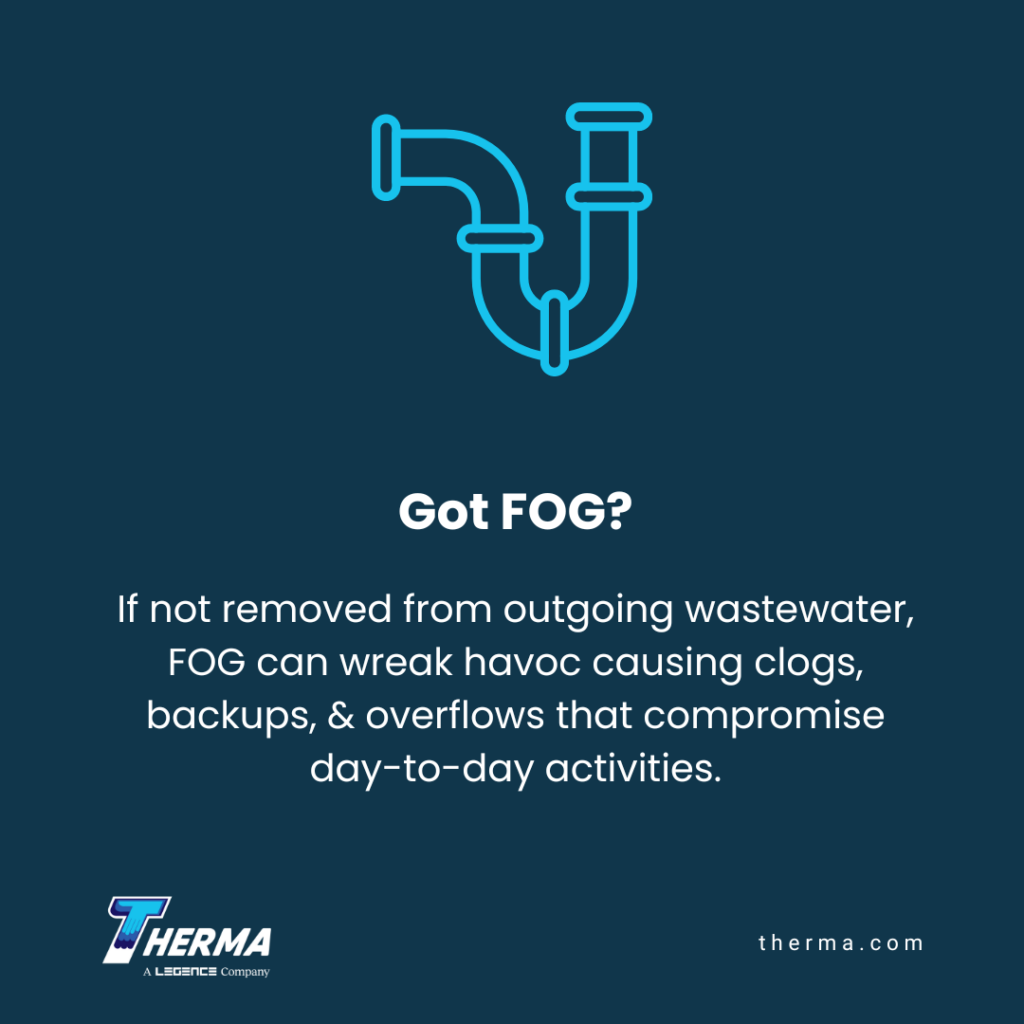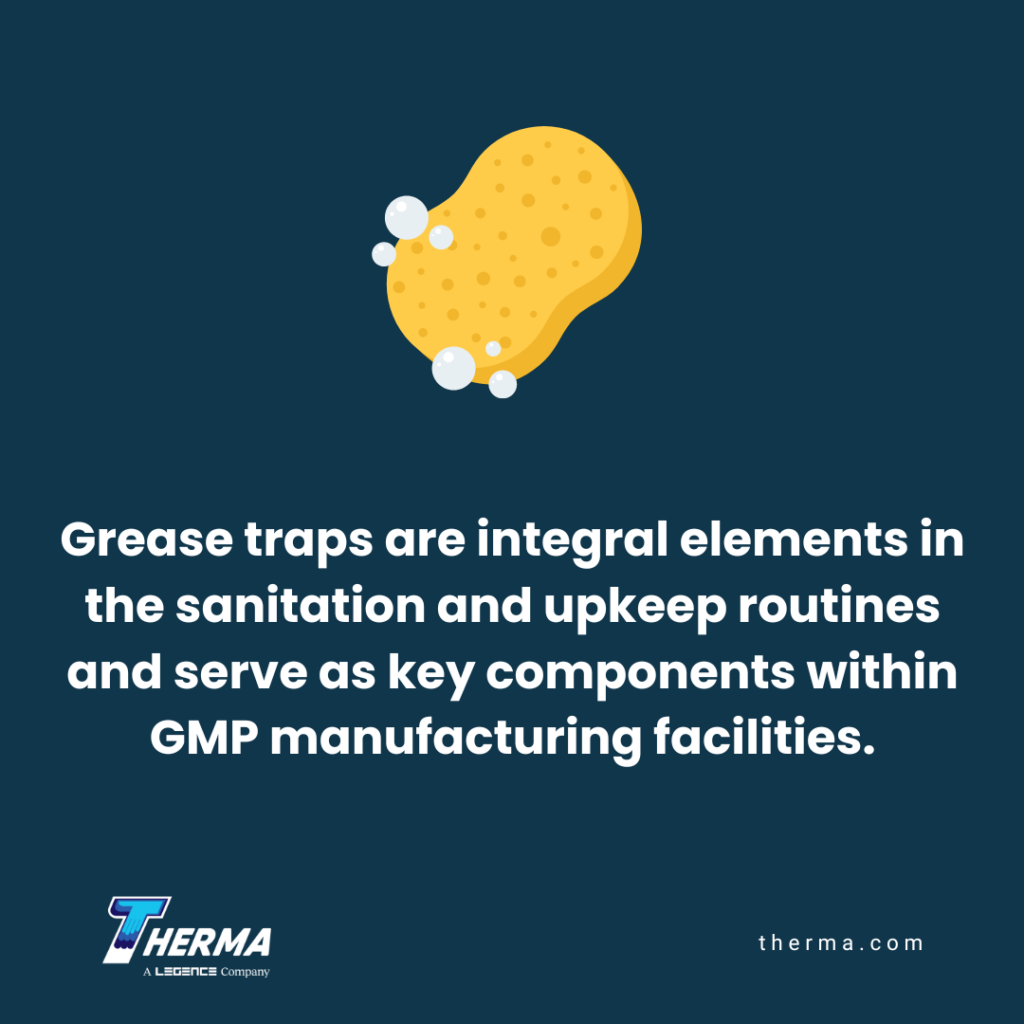by Ali Kriscenski
Controlling wastewater contamination is a common building management issue. In high-volume food establishments, and manufacturing facilities, this can require installation and maintenance of a commercial grease trap. Grease traps are designed to manage the proper disposal of fats, oils, and greases (FOG) and prevent these substances from entering wastewater or stormwater systems.
How Grease Traps Work
Grease traps are installed in wastewater lines as an interceptor to catch FOG before the wastewater leaves a building. The devices are receptacles that hold incoming water and FOG in a tank. While in the tank, the fats and greases separate and float to the top allowing the wastewater to exit the tank without contamination.
Types of Grease Traps
Manual grease traps use the physical properties of FOG substances and water to hold and separate contaminants. Typically made of plastic or stainless steel, these grease traps have a low initial investment cost. These types of grease interceptors are suitable for smaller establishments and require regular monitoring and cleaning to stay efficient.
Automatic grease traps function similarly to manual grease trips in that they use the physical properties of the substances passing through them. However, automatic devices use heat to help separate FOG from the wastewater. The organic substances are then skimmed automatically and moved to a disposal container. Automatic grease traps can incur higher upfront costs, however, they are more efficient than manual devices.
Gravity grease traps are larger versions of manual versions and are often buried to accommodate their size. These devices are suitable for larger operations that have significant wastewater volume and regulatory requirements. Because of their size and exposure, gravity grease traps require pumping and maintenance by a disposal management company.

FOG Issues in Wastewater
If not removed from outgoing wastewater, FOG can wreak havoc causing clogs, backups, and overflows that compromise day-to-day activities. These disruptions strain municipal resources to clean and repair sewer systems. These contaminants can corrode drain lines, create pest infestation in mechanical spaces, foul odors, and lead to air, soil, or water pollution.
Importance of Grease Trap Cleaning
Cleaning and maintenance are critical components of kitchen and restaurant operations, as well as GMP manufacturing facilities. Properly maintained equipment keeps production running, and anything that fails inspection could lead to temporary or permanent business disruption. Grease traps are part of the cleaning and maintenance protocols that commercial kitchens and manufacturing facilities are required to follow.
Regular grease trap cleaning can alleviate waste odors that may permeate from the tank. While these may be subtle, they can impair the working environment and may also influence patrons or impact the nearby community. Cleaning helps protect the tank and drain lines from corrosion which could lead to costly repairs or replacement. Additionally, these measures help prevent blockages that could lead to business disruption or fines.
When to Perform Cleaning
Typically, grease traps should be cleaned at least quarterly, but owners should expect this to be done every 1-3 months. The volume of activity can create the need for more frequent maintenance, for instance during high-volume seasons like summer or holidays, or other increased production demand times.
The grease trap device should be added to overall facility maintenance schedules so there is documentation of cleaning frequency and an established inspection timeframe. For smaller devices, it’s good practice to check the tank weekly to keep an eye on the grease accumulation and stay ahead of larger issues. Keeping track of cleaning will also help determine if your device is sized properly or needs to be replaced.
You can improve grease trap performance by implementing some best practice measures in your facility. These can include recycling waste cooking oil by selling it for biofuel. Wiping cookware and dishes before rinsing and using strainers at drains will also improve FOG controls. In manufacturing facilities, proper training and regular in-house inspections of wastewater equipment can help identify any maintenance issues that need to be addressed.
Staying Compliant
All businesses, regardless of size, have regulatory requirements for wastewater management. Installing, cleaning, and maintaining proper grease trap devices is an operational and compliance issue. Incorporating grease trap inspection, cleaning, or pumping into a regular maintenance program will ensure that your facility maintains operational continuity. The professionals at Therma can provide the needed insight and experience to keep your system compliant. Contact us today to learn more.
AUTHOR BIO
Ali Kriscenski was trained in high-performance building design at Boston Architectural College. She has worked with leading architecture and construction firms in NYC and New England and served on the executive team at the Forest Stewardship Council International. She was the managing editor at Inhabitat and has worked pro bono for the Green Building Institute, ISEAL Alliance, and Habitat for Humanity.
Sources
US EPA – Wastewater Sources and Solutions








